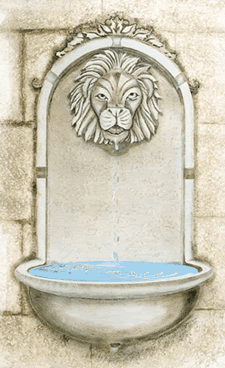From Myth to History
 Theology, while saying that a special illumination has been vouchsafed to Christians and (earlier) to Jews, also says that there is some divine illumination vouchsafed to all men. The Divine light, we are told, 'lighteneth every man'. We should, therefore, expect to find in the imagination of great Pagan teachers and myth-makers some glimpse of that theme which we believe to be the very plot of the whole cosmic story--the theme of incarnation, death, and rebirth. And the differences between the Pagan Christs (Balder, Osiris, etc.) and the Christ Himself is much what we should expect to find. The Pagan stories are all about someone dying and rising, either every year, or else nobody knows where and nobody knows when. The Christian story is about a historical personage, whose execution can be dated pretty accurately, under a named Roman magistrate, and with whom the society that He founded is in a continuous relation down to the present day. It is not the difference between falsehood and truth. It is the difference between a real event on the one hand and dim dreams or premonitions of that same event on the other. It is like watching something come gradually into focus; first it hangs in the clouds of myth and ritual, vast and vague, then it condenses, grows hard and in a sense small, as a historical event in first-century Palestine.
Theology, while saying that a special illumination has been vouchsafed to Christians and (earlier) to Jews, also says that there is some divine illumination vouchsafed to all men. The Divine light, we are told, 'lighteneth every man'. We should, therefore, expect to find in the imagination of great Pagan teachers and myth-makers some glimpse of that theme which we believe to be the very plot of the whole cosmic story--the theme of incarnation, death, and rebirth. And the differences between the Pagan Christs (Balder, Osiris, etc.) and the Christ Himself is much what we should expect to find. The Pagan stories are all about someone dying and rising, either every year, or else nobody knows where and nobody knows when. The Christian story is about a historical personage, whose execution can be dated pretty accurately, under a named Roman magistrate, and with whom the society that He founded is in a continuous relation down to the present day. It is not the difference between falsehood and truth. It is the difference between a real event on the one hand and dim dreams or premonitions of that same event on the other. It is like watching something come gradually into focus; first it hangs in the clouds of myth and ritual, vast and vague, then it condenses, grows hard and in a sense small, as a historical event in first-century Palestine.~C.S. Lewis, The Weight of Glory and Other Addresses, "Is Theology Poetry?" (1949)




0 Comment(s):
Post a Comment
<< Home